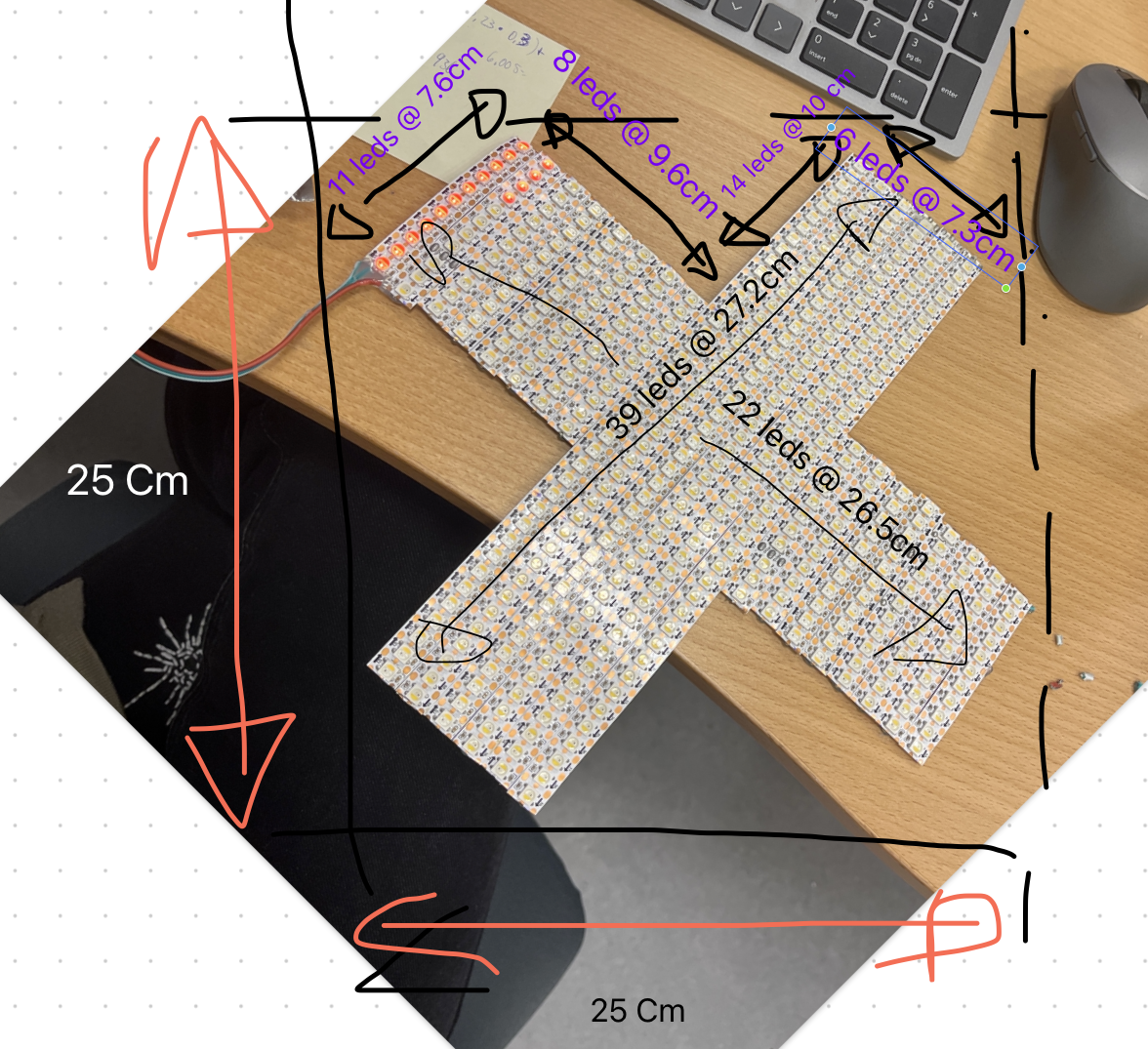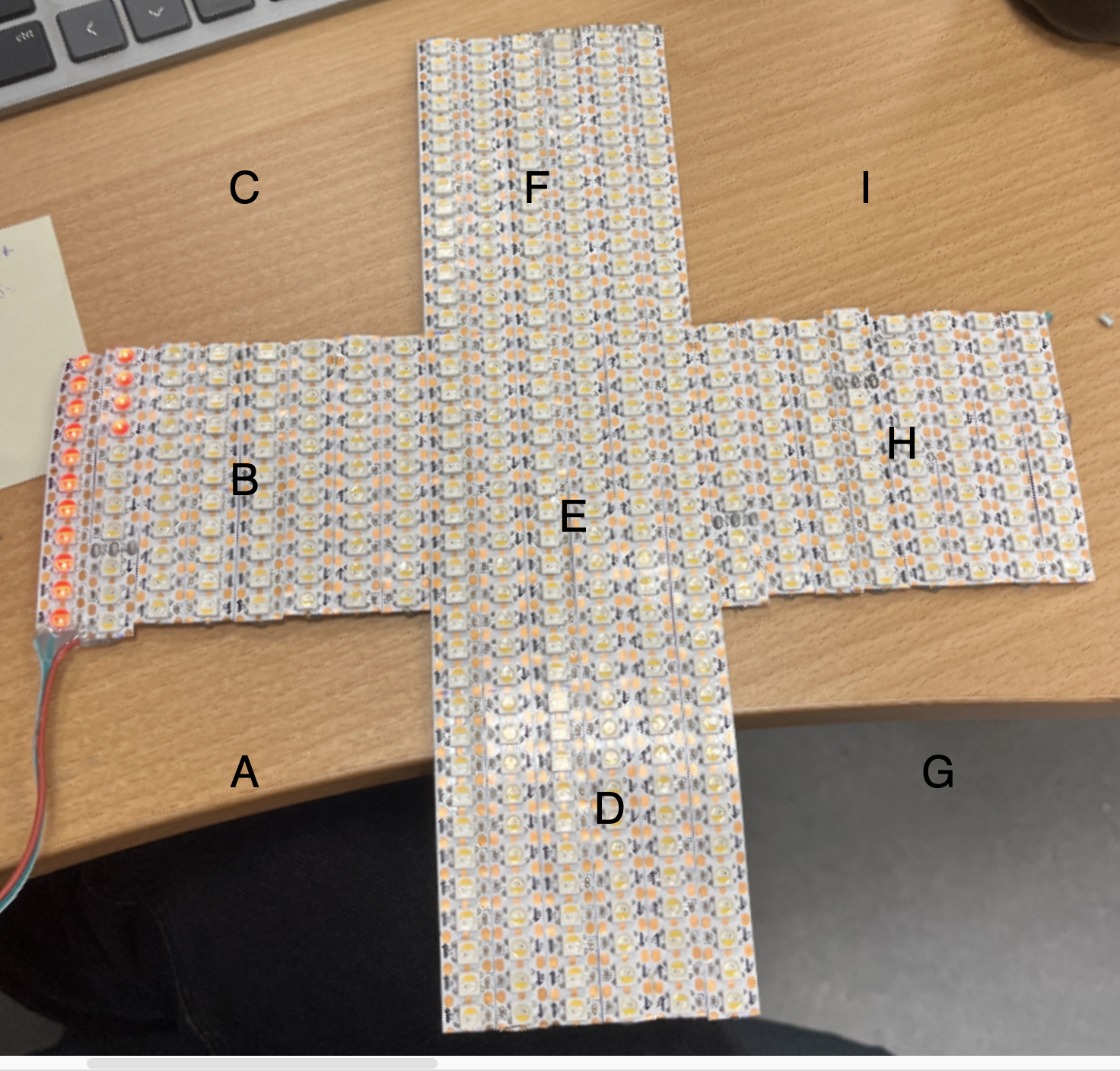I wanted to come back doing projects with LEDS, and I got some spare materials from a course, so I designed a screen with an X.

I will program it as a +, that means vertically, and then do a trasponse of 45 degress.
In that case:
- The screen is 39 leds in the Y axis
- Real 22 leds (8+6+8), on the X axis, but, I am gonna make virtual 40 leds on the X axis, so I skip some, to give the effect to be a square screen
- That makes a screen of 44 x 40. Where some leds are skipped.

In LEDS and Pixels:
- A -> X 8 Leds Y 14 Leds | X 16 Pixels Y 14 Pixels
- B -> X 8 Leds Y 11 Leds | X 16 Pixels Y 11 Pixels
- C -> X 8 Leds Y 14 Leds | X 16 Leds Y 14 Leds
-
- D -> X 6 Leds Y 14 Leds | X 12 Leds Y 14 Leds
- E -> X 6 Leds Y 11 Leds
- F -> X 6 Leds Y 14 Leds
-
- G -> X 8 Leds Y 14 Leds | X 16 Leds Y 14 Leds
- H -> X 8 Leds Y 11 Leds
- I -> X 8 Leds Y 11 Leds
I need a function that transform X and Y to Leds color.
- If X is odd, discard, cuz we are discarting odds
- If X is >= 42 or Y is >= 39 discard
- If part of A or C or G or I, discarted. That is:
- A -> (X >= 0 and X < 16) and ( Y >= 0 and Y < 14)
- C -> (X >= 0 and X < 16) and ( Y >= 25)
- G -> (X >= 28 ) and (Y >= 0 and Y < 14)
- I -> (X >= 28 ) and (Y >= 25)
Pixel (X, Y) | Expected Led number:
- (0, 0) -> Discarted
- (0, 14) -> (0)
- (0, 15) -> (1)
- (0, 24) -> (10)
- (2, 24) -> (11)
- (2, 25) -> Discarted
- (2, 23) -> (12)
- (2, 22) -> (13)
- (2, 14) -> (21)
- (4, 14) -> (22)
- (4, 15) -> (23)
- (16, 0) -> (88)
- (16, 1) -> (89)
- (16, 2) -> (90)
- (16, 38) -> (126)
- (18, 38) -> (127)
- (18, 37) -> (128)
- (18, 0) -> (165)
- (20, 0) -> (166)
- (20, 1) -> (167)
- (28, 0) -> Discarted
- (28, 14) -> (322)
- (28, 15) -> (323)
- (28, 24) -> (332)
- (30, 23) -> (333)
Software
Upload files
I will use something like this to upload pictures.
File format
I will make a python script to create the binary structures. Something like the next:
from PIL import Image
def convert_to_grb(image_path, output_path, width, height):
img = Image.open(image_path).resize((width, height))
img = img.convert('RGB')
with open(output_path, 'wb') as f:
for pixel in img.getdata():
g, r, b = pixel # Convert to GRB
f.write(bytes([g, r, b]))
convert_to_grb('image.png', 'image.grb', 16, 16)